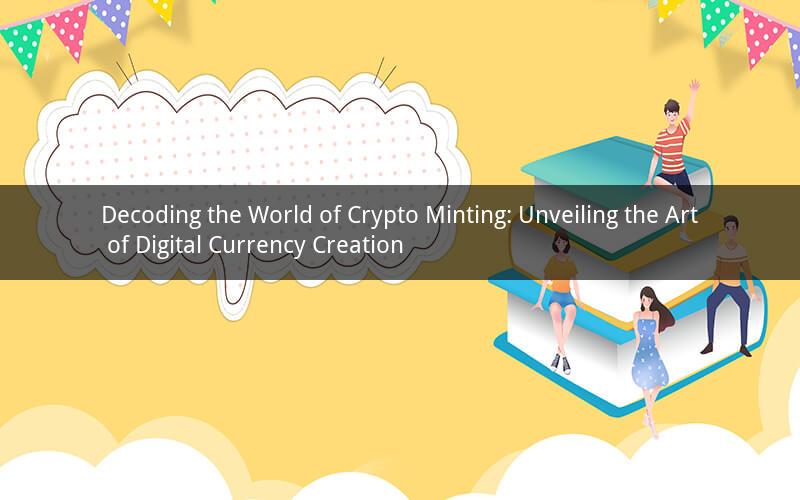
Introduction:
In the ever-evolving world of cryptocurrencies, the term "minting" has gained significant attention. It refers to the process of creating new digital coins or tokens. This article delves into the intricacies of crypto minting, exploring its various aspects, benefits, and potential risks. By understanding the concept of minting, individuals and businesses can make informed decisions regarding their participation in the crypto space.
What is Minting in Crypto?
Minting in the crypto world is akin to mining in traditional mining activities. It involves the creation of new digital assets, which are then added to the existing supply of a particular cryptocurrency or blockchain network. Unlike mining, which is predominantly used for Proof-of-Work (PoW) cryptocurrencies, minting can be applied to various consensus mechanisms, including Proof-of-Stake (PoS) and Delegated Proof-of-Stake (DPoS).
The minting process varies depending on the specific cryptocurrency or blockchain platform. However, it generally involves the following steps:
1. Validation: Participants in the network must validate transactions and ensure the integrity of the blockchain. This validation process is crucial in maintaining the security and reliability of the network.
2. Reward: Validated transactions are rewarded with newly minted coins or tokens. The reward amount and distribution mechanism depend on the specific cryptocurrency or blockchain platform.
3. Distribution: The newly minted coins or tokens are distributed to the participants who contributed to the validation process. This distribution can be in the form of block rewards, transaction fees, or other incentives.
Benefits of Crypto Minting:
1. Security: Minting ensures the security and decentralization of cryptocurrencies. By distributing the minting process among network participants, it minimizes the risk of a single point of failure.
2. Incentivization: Minting serves as an incentive for individuals to participate in the network. It rewards participants for their efforts in maintaining the network's integrity and security.
3. Token Supply Control: Minting allows the creators of cryptocurrencies to control the supply of tokens. This control can be crucial in maintaining the value and scarcity of the digital assets.
4. Innovation: Minting fosters innovation within the crypto space. It enables the creation of new digital assets with unique features and functionalities, catering to diverse market needs.
Potential Risks of Crypto Minting:
1. Centralization: If the minting process is not properly decentralized, it can lead to centralization of power, which can undermine the very essence of cryptocurrencies.
2. Inflation: Excessive minting can lead to inflation, eroding the value of the digital assets. It is crucial for cryptocurrency creators to maintain a balanced minting rate.
3. Regulatory Challenges: The minting of digital assets can attract regulatory scrutiny, as governments worldwide grapple with the evolving crypto landscape.
4. Technical Complexity: Minting requires technical expertise and infrastructure. This complexity can pose challenges for new entrants in the crypto space.
Frequently Asked Questions (FAQs):
Q1: What is the difference between minting and mining?
A1: Mining is primarily associated with Proof-of-Work cryptocurrencies, where participants solve complex mathematical puzzles to validate transactions and earn rewards. Minting, on the other hand, is a broader term that can be applied to various consensus mechanisms, including PoS and DPoS.
Q2: Can any individual mint new cryptocurrencies?
A2: Minting new cryptocurrencies generally requires technical expertise and access to the necessary infrastructure. However, individuals can participate in the minting process by becoming validators or stakers in Proof-of-Stake or Delegated Proof-of-Stake networks.
Q3: How does minting contribute to the security of cryptocurrencies?
A3: Minting ensures the security of cryptocurrencies by distributing the minting process among network participants. This decentralization minimizes the risk of a single point of failure, making the network more resilient to attacks.
Q4: What are the potential drawbacks of excessive minting?
A4: Excessive minting can lead to inflation, eroding the value of digital assets. It can also result in centralization of power, undermining the very essence of cryptocurrencies.
Q5: How can minting foster innovation within the crypto space?
A5: Minting enables the creation of new digital assets with unique features and functionalities. This innovation caters to diverse market needs, driving growth and development within the crypto space.